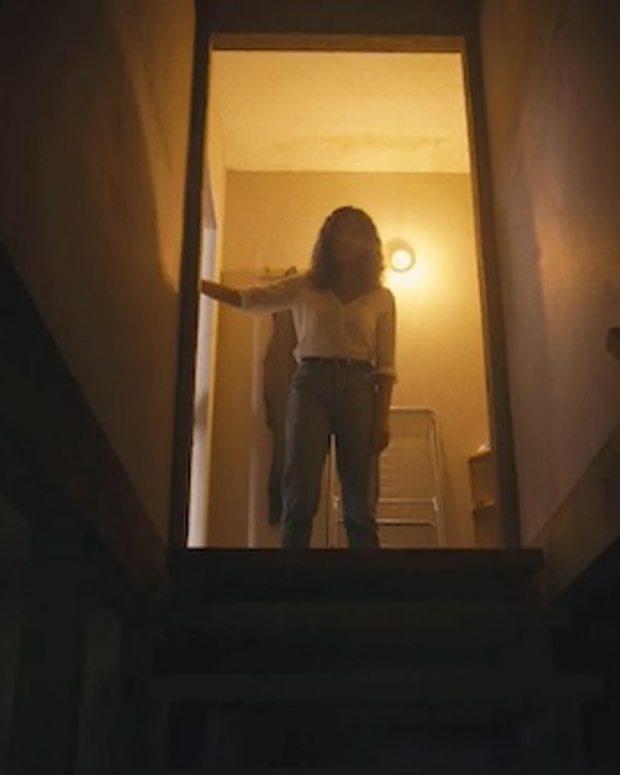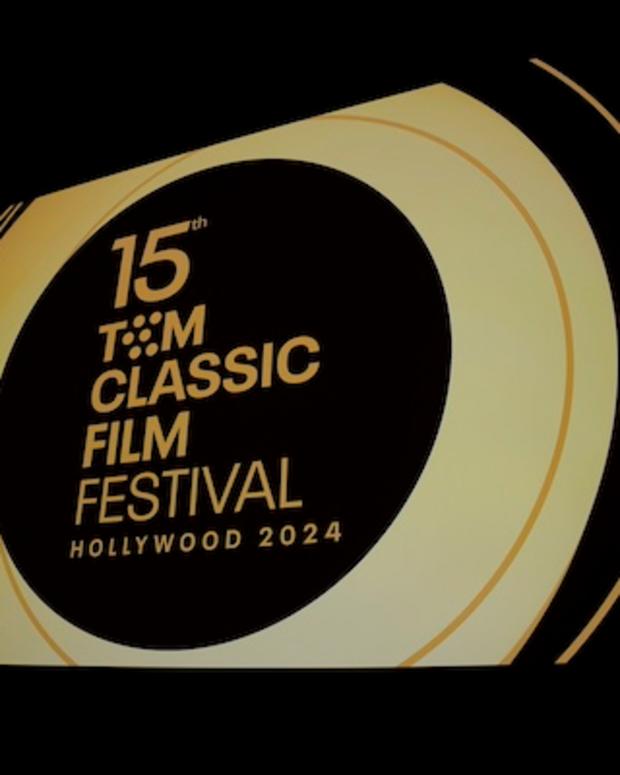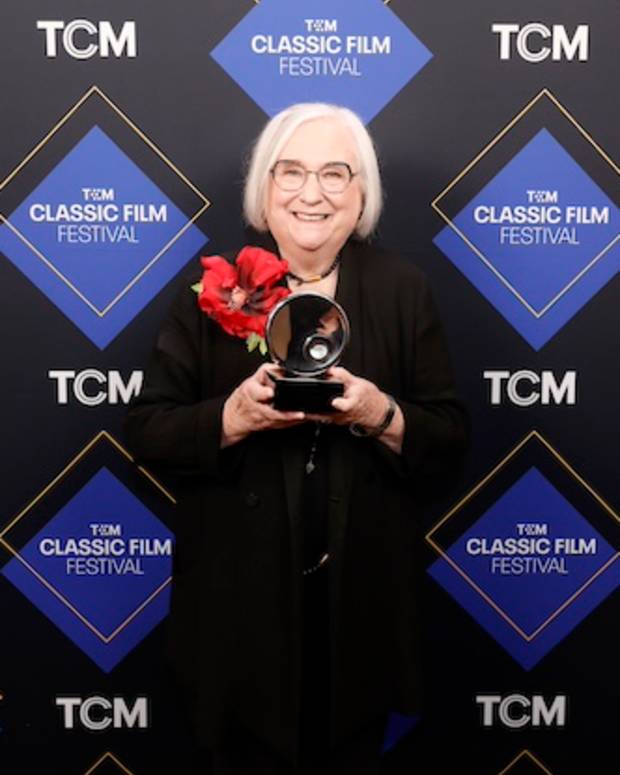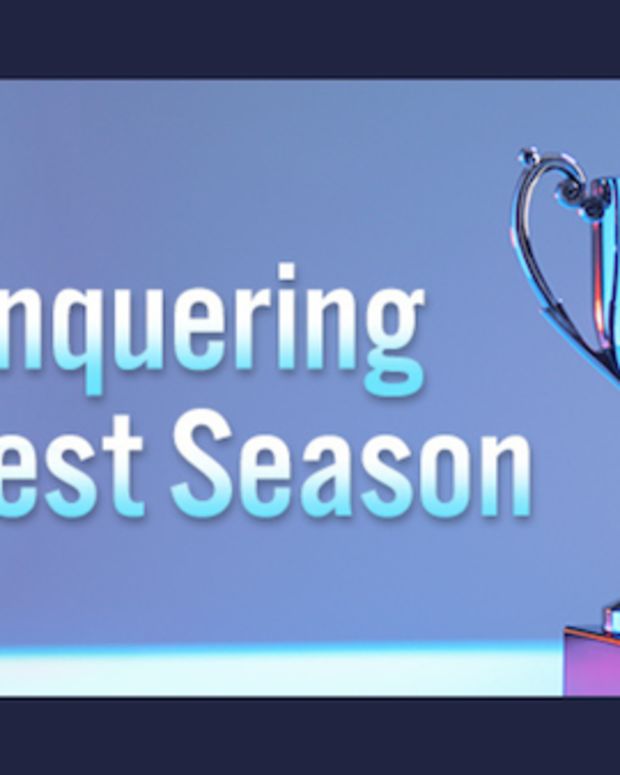Writer/Director Todd Robinson on "The Last Full Measure," Adapting a True Story, and the True Importance of a Hero's Journey
Click to tweet this interview to your friends and followers!
Once in a lifetime, if a writer is lucky, they discover a story so compelling that they can’t rest until they bring it to the masses, even if it breaks them. Their drive is not about ego or insanity. It’s about humanity and storytelling. Giving up just isn’t an option.
The Last Full Measure was that story for Todd Robinson. The journey from discovery to screen took 20 years. You read that right—20 years of ups and downs, before completion. Over those years, the film had multiple A-list stars attached, but the final and impeccable cast was comprised of Sebastian Stan, Jeremy Irvine, Christopher Plummer, Bradley Whitford, Diane Ladd, William Hurt, Amy Madigan, Ed Harris, Peter Fonda, Alison Sudol, John Savage and Samuel L. Jackson. Now, that’s a cast worth waiting for.
The film’s logline explains why this project would be a magnet for talent.
“The Last Full Measure tells the true story of Vietnam War hero William Pitsenbarger, a U.S. Air Force Pararescue medic who saved nearly 60 men in the Army’s 1st Infantry Division before making the ultimate sacrifice in one of the bloodiest battles of the war. Thirty-two years later, Pentagon staffer Scott Huffman investigates a decades-long Congressional Medal of Honor request for Pitsenbarger and uncovers a high-level conspiracy prompting him to put his career on the line to seek justice for the fallen airman.”
I spoke with Todd about his experience championing this film, his advice on the intricacies of adapting true stories, and also discovered he was a featured writer in the March/April 1996 print issue of Script! Watch for a reposting of that classic soon.
This interview has been edited for content and clarity.
Jeanne Veillette Bowerman: Let’s talk about finding the story of William Pitsenbarger that would drive you to work for 20 years to get it made.
Todd Robinson: It took me my whole career (laughs). From almost the beginning to now, or close to it. The way it started was my doing research on a Wolfgang Peterson project that had to do with the Air Force. I was touring around the country, trying to get my hands around the career field of Air Force Pararescue, who are Special Operations-level paramedics, trained to be lethal if they have to be, like a Navy SEAL or a Green Beret, but their credo is, “These things we do that others may live.” Even in peacetime, these people will trade their lives for yours. They believe that deeply. Their job was to save lives rather than take lives. That attracted me.
As I was traveling the country, going through their “pipeline” training syllabus, which takes about two years to go through, all of these young guys wanted to make sure I knew the story of William Pitsenbarger. In their world, he’s sort of their patron saint. I thought it was interesting, but I was wrapped up with Wolfgang and didn’t have the bandwidth. As I got to the graduation, after following this class for almost two years, Mr. [Frank] Pitsenbarger was asked to come and speak at the commencement. He was very ill at the time with cancer and was dying. He spoke from the heart, lamenting that he had never gotten to see his son fall in love, and have a child of his own, because only then could he understand how much his father loved him.
Jeanne: That line made me tear up when Christopher Plummer delivered it.
Todd: As a world-class plagiarist, obviously, I stole it and put it in the movie (laughs).
Jeanne: Of course! (laughs)
Todd: Epiphany comes in moments of nonlinear acceleration, as we call it in the storytelling world—an insight just hits you. I flashed back to the early 1970’s, sitting around the dinner table with my parents, watching the evening news, “The Huntley-Brinkley Report.” At the end, they’d run this scorecard of how many Americans were killed or injured, and how many Vietnamese were killed or injured. It was always lopsided, and looked like we were kicking their asses. As a kid, I thought, I guess we’re winning. My dad just looked up at the TV and said, “If this war lasts any longer, we’re going to move to Canada.”
I didn’t give much thought to that night until Mr. Pitsenbarger uttered those words at the ceremony. All of a sudden, I realized my father was afraid that something as existential as a draft lottery number might take from him the thing he loved and cherished the most... that was me. In that same moment, I flashed on my son, who at the time was eight or nine, and I got it. If I lost my son, I don’t know if I could go on. That was the moment I knew there was a story to tell. It was such a powerful feeling for me, that I spent 20 years trying to get it made.
From a writing point of view, it’s about identifying those things that are important to you that will fuel you to get from the starting line to the finish line. It’s always a trial.

Sebastian Stan, Diane Ladd, and Christopher Plummer in THE LAST FULL MEASURE. Photo Credit: Tina Rowden Courtesy of Roadside Attractions
Jeanne: I like to dig into special causes someone is interested in and how they impact their storytelling. Tell us about the influence of “Save a Warrior” (SAW) on both the film and your choices as a writer.
Todd: I wrote the first draft of the script in 2002, and there were several iterations along the way that almost got made. As the years went by, I’d go back and do rewrites. It evolved over time. As part of the long trauma, almost, of making the movie, I ended up in Atlanta, scouting locations. It was now December of 2017, and my son—this is how long it took—was now my assistant on that movie (laughs). He went to film school at USC. I got this call from one of the producers that the gigantic movie star who was involved, and critical to the financing, bowed out… for the second time. I felt like I just couldn’t take it anymore. That I had done everything I humanly could do to get this movie made. I called my son and said, “Get me on a plane, now! Not tomorrow. Not tonight. I’ve got my bags packed, and I’m going to the airport!” I went to Hartsfield, and I came home, and I was done. This was the straw-that-broke-the-camel’s-back moment for me. I was crushed. I was so deeply into this, and had such commitment to the men that it was about. My heart was absolutely broken.
This was a Wednesday. I met Jake Clark from Save a Warrior maybe a month or so earlier. He just happened to call me on that Saturday. “We’re doing a cohort at Pepperdine on Sunday, why don’t you come and check it out.” I was exhausted. But my wife said it’s Pepperdine, only 10 min from the house, just go. So, I go to Pepperdine. When I walk in, there are literally suicidal Veterans, about 12 of them. Haunted dudes, chewing tobacco, spitting in cups. I was just like, “Woah, what have I gotten myself into?”
Jake is there, a very charismatic guy. “So glad you made it, man! I got you a seat.” He had a seat for me in the midst of these Veterans. I was like, “No way, dude. I’ll sit in the back and watch. I’m not a Vet.” But Jake explained, “We hold a seat for a civilian witness every cohort, and I’m giving it to you.” This is five days of intense stuff. I called my wife and I was like, they want to sequester me for five days… they take away your cell phone… no way! She said, “Yeah, you should do it” (laughs).
I ended up doing it. Long story short. It changed my life. Completely. I’ve not been the same since. I’ve moved on to be an active SAW Board member, and it’s become a big part of my life.
Then, in January, I get a call that the movie is back on, but I’m done. Not doing it. They had to drag me kicking and screaming back, because I just didn’t believe them. In fact, I didn’t believe them all the way through pre-production. I didn’t believe them right up until William Hurt showed up a week before for rehearsals. Then I thought, “Well, maybe it is real” (laughs). Really, it was that shaky the whole time.
What influenced me from SAW is that Jake Clark uses Joseph Campbell’s A Hero’s Journey to describe what these men are going through who are facing suicidal ideations, and it has to do with resistance to the call, initiation, and return with treasure to serve the greater good. First of all, I always thought this was just a cute little structural thing we used for screenplays. It didn’t dawn on me that it actually existed all the way back to Euripides to help mythology explain the human condition so we can identify where we are in the struggle of life at any given moment.
I went back and looked at the script from that point of view and did another pass on it. It really helped in the directing of it, too. I was able to tell Sebastian [Stan] that he was basically playing me because all of these scenes are written versions of the conversations I had with each of these men as I traveled the country meeting them. I could explain to him the emotion of how I was changing. Moreover, I was able to let him know where he was in the cycle of the character’s development of change at every beat in the movie, because I had this sort of master class in it with real people, truly suffering. It was a really transitional project for me in that way, because it upped my whole game.
[Script Extra: Successful Writers and Producers Share Essential Writing Advice]
Jeanne Do you think Pitsenbarger’s earlier desires to become a SEAL, at the too-young age of 16 or so, is what drew him to pararescue?
Todd: Mr. Pitsenbarger was a WWII Veteran. My dad was a Korean War Veteran. Military traditions tend to take place within families. There are men who have been through it, like my dad. Who would say you do not need to do this to become a man. You don’t need to go through that trauma while fully respecting and honoring those who do. In SAW terms, we call it a “false initiation”—you’re being initiated by fire and suffering, but you’re not being initiated by other initiated men. It’s a big issue in our culture. Part of the reason we have all of these “Me Too” issues is because the crimes against women are being perpetrated by men who have not property been initiated, societally. They’re exhibiting “boy behavior.”
So, the movie, in the end, as touched on by the direction, really speaks to those issues. It’s all about Scott Huffman’s initiation into the world of men by other men who have suffered, processed and earned their place in the world. They understand their priorities because of what they have seen and been through. They think he’s worth it. Even though he thinks he’s helping them, they are really helping him.

Sebastian Stan and William Hurt in THE LAST FULL MEASURE Photo Credit: Jackson Lee Davis Courtesy of Roadside Attractions
Jeanne: Adapting a true story has many challenges, especially one with the weight of Pitsenbarger’s legacy. Can you speak to how you decided what parts to fictionalize, like the character of Scott Huffman instead of telling the story through the real-life historian, Parker Hayes?
Todd: This always comes up. Not just with this movie, but with all movies. Movies are not history. If you want to tell a story dramatically, what you are doing is looking for a playing field to play out issues and ideas you have. Look at Aaron Sorkin and the movies he’s made. Do you think Social Network is an accurate depiction of Mark Zuckerberg’s life? Of course it isn’t, but it’s a phenomenal film that makes you think. David Mamet will tell you the same thing. This is not about getting details right, this is about getting themes right. In the case of this story, I needed a storyteller who could be a proxy for the audience. Again, I was less interested in the story of Pitsenbarger, except that it was a phenomenal story that was untold, which is good, and it was a piece of tremendous valor that needed to be meditated upon.
There’s a central question in the movie, which was, “Why did he stay when he could have left and saved himself?” This is the thing that we celebrate in hero movies all the time, which is the constant meditation on the hero act. Why would somebody do this thing on behalf of someone he or she does not know? I needed a way into that.

Samuel L. Jackson and Sebastian Stan in THE LAST FULL MEASURE Photo Credit Jackson Lee Davis Courtesy of Roadside Attractions
I flew to Washington and spent a few days with Parker Hayes. He said to me directly—and he wasn’t a storyteller per se, he was a historian—"If you really want the story, you need to go and interview all these guys I just interviewed.” He was the first guy they ever talked to, making me the second guy they ever talked to. Every one of them was so raw, vulnerable and open about this. I can’t tell you how many times I sat in public places, restaurants and parks with full-grown men, sobbing. That is the reason I became so committed to it. I fell in love with these men, and I felt like someone needed to be an advocate for their suffering. It was also a great story, too. There was something in this that I could serve myself with. I’d be lying to say I wasn’t salivating over the richness of the story. But I sensed a deeper commitment to them. That was worth sticking around for.
So, the [Huffman] character is real. It’s an amalgam of Parker and of me. Just yesterday I listened to a wonderful podcast with Ang Lee, where he says, “I am all of these characters. I’m just playing them out through the script and the action.” It’s the way filmmakers roll. That doesn’t change the truth of any of the details of what happened. The Veterans of the movie said it was like being there again. The chaos of that battle, shot in a way that I’m not sure you’ve seen in battle scenes before, where you just don’t know where you are, and that was their experience. They were in about a 100-yard perimeter in a triple-canopy jungle where it was impossible to know where anyone else was. There was a lot of friendly fire that happened, they dropped in 105mm howitzer rounds on their own positions. All kinds of things happened that were unintentional and brutal. That’s what we tried to recreate, to honor that chaos, so we could create context to also explain their feelings of guilt and shame and try to let them off the hook a bit.

Cody Walker, Jeremy Irvine and SerDarius Blain in THE LAST FULL MEASURE. Photo Credit Wasan Puengprasert Courtesy of Roadside-Attractions
Jeanne: Those battle shots were effective. As I watched, I wanted to spin my head around to get my bearings.
Todd: From a filmmaking point of view, what we’re looking for is authenticity in a dramatic setting. Those dramatic elements are choices a filmmaker makes. If you go back to Saving Private Ryan, that’s a largely fictitious story, inspired by Fritz Niland and a U.S. War Department 'sole-survivor' directive. That was Steven’s [Spielberg’s] stepping-off point to tell that story to explore the existential questions about war. But the authenticity of the invasion of Normandy in that movie is second to none. These are the people I look to for my signals. The big boys, looking at how they did it and what mattered to them.
Jeanne: There are a lot of stories that have been told about Vietnam. The benefit of that is it allows you to now focus on the people, not the politics.
Todd: I didn’t want to take a political approach. Huffman’s also kind of a millennial. It takes place in 1999, that’s when this all happened. I kind of blurred my own vision and didn’t go with a bunch of period cars, etc. Although, you’ll notice his wardrobe and hair are rather JFK Jr.-esque. It was trying to take a modern generation and give them an entry point that was accessible, which was part of the casting of Sebastian Stan. He’s in the Marvel Universe, so are Sam [Samuel L. Jackson] and William [Hurt]. It’s a way for younger people to go, "Oh wow, these are our dads that fought this war," and dip their toes in a bit.
Jeanne: You had such an incredible cast.
Todd: Movie stars are attracted to good writing. My advice to anybody who wants to be a filmmaker, is material, material, material. If you know your material inside and out, you can advocate on behalf of it. I’ve had the most amazing people attached to this movie for the entire 20-year ride. But at some point, you have to take a dart and hit the calendar and pick your start date and see who is really available. ICM, where Sebastian was repped at the time, was willing to give me access to all of their folks. Once I was able to sit with everyone, they all wanted to be part of this. Some of them were easy calls because I had worked with them before. When you look at that generation of men, I think many of them reflected back on the Vietnam War, and they wanted to honor their friends who went and didn’t come back, or went and came back changed. That’s what was so magical about the making of the movie—everyone was so deeply committed. Every once in a while, you make a movie that’s about something, that isn’t just a paycheck or some gigantic green-screen movie. When you look at William Hurt’s performance, it illustrates this commitment. They were all in.
Jeanne: Totally.
[Script Extra: What Can Writers Learn From Actor Interviews?]
Todd: As a film geek, I was just sitting back and nerding out in a way, thinking I can’t believe this is happening in front of my cameras. It’s such a privilege to be associated with those people because, in a way, they immortalize you a little bit. You get to be a small part of cinema history, and the history of the subject. No one can ever take the fact that I had that experience away from me. That’s all you really get out of these things at the end of the day. You get the experience of doing it. Whether the people like the movie, go to the movie, or whether it gets promoted properly. So much is out of your control, but on the day when people like William, Ed Harris, Samuel Jackson, Chris Plummer, and Diane Ladd are living through your words, that’s the dream come true. That’s what makes the brutal work of writing and rewriting worth it.
Jeanne: We always talk to writers about the script being what attracts actors to your project. But it’s not just the quality of the writing, it’s also the subject matter. It’s something they can relate to, and it really shows in their performances.
Todd: That moment at the end, with William, without saying anything, he basically hands Huffman his manhood. “You said there was nothing in this for you?” And Huffman says, “Yeah.” He just lets that hang. Then without speaking he says with his eyes, “Look at that beautiful woman and look at those kids. You had everything to win in this game, but you were just going after the wrong things.” That’s kind of the way life is. We so often are going after things that are driven by the ego, rather than heart. Service greater than self is the best thing you can possibly chase after, in my view. That’s the way I look at filmmaking. I ask how can I best serve this project? Am I the right person for the project? That’s the first question you have to ask. I turn down anything I don’t feel I have something to contribute to. That’s why as a writer/director I almost always go back to my own work, even though it’s not always the most commercial. At least it’s meaningful to me. That’s what keeps me going.
Jeanne: Which leads me into my favorite question to ask people. If you could go back in time and talk to your 18-year-old self, what advice would you give him?
Todd: That’s a fantastic question. I think I know the answer. It has nothing to do with filmmaking. I had to figure out who I was, who I am, where I’ve been, and where I’m going. Self-examination is imperative to being a creative voice, to being a storyteller, an artist. My issues had to do with not being heard in my family. So, I compensated by picking a career where I speak to millions and millions of people (laughs). I’ve struggled with anxiety, and sort of overreacted to things in life. If I could go back and talk to the 18-year-old me, it would be to say relax, truly try to live in the moment, and enjoy all of this. It moves past you so quickly. There isn’t enough time to do it all. I regret moments where I was with people I cared about but was distracted. I wish I could have a do-over on some of that.
The first feature I directed was a John Travolta, James Gandolfini, Salma Hayek, Jared Letto, and Laura Dern movie called Lonely Hearts. I had made the movie, and it was a really difficult process—I was in post-production. I went to my grandfather’s house back in New York to take a break. I spent the entire family vacation—with my parents, my wife, my kids, my sister—out on the dock, pacing on the cell phone and yelling at people. That’s the way I remember it. I was stressed out. Post was just a nightmare. When I had started that project, my dad asked how I was going to handle working with all of these big-time people? I said “Poise. I’m just going to remain poised.” He said, “Good plan.”
Now it’s the end of the vacation, and I spent two weeks completely distracted. As I was getting into the car to go to the airport, my dad walks out. He’s an architect and had this beautiful script. He handed me this little ribbon of paper that almost looks like it came out of a fortune cookie. On it he had written one word—“Poise” in his beautiful block printing. He then said, “You need to remember something, this is just a thing you’re doing, and we all love you. And you really need to not take this out on everyone else. Remember that as you’re going forward.” My dad was a man of very few words, but he was a deeply thoughtful man. I took that piece of paper, and I carry it with me everywhere I go. What I didn’t know at that moment was that was the last time I would ever see him. It was one of the moments that double reinforced itself, because you never know what is going to happen or what’s coming. There’s that great line in No Country for Old Men, “You can’t see what’s coming.” We all need to embrace the joy of the moments we’re having. If I could go back to my younger self, I’d tell him to enjoy these moments because they are really precious. That was my dad’s final lesson to me.

The Robinson Family
Tyler James Robinson, USC film graduate, Editor, writer, Director and Todd's son and assistant on TLFM. His wife and Manager Elizabeth Robinson. And daughter Tessa Lynn Robinson, USC Film School graduate and television producer.
Jeanne: And an excellent lesson. When I’m stressing out, my writing partner always tells me, “Jeanne, it ain’t nothin’ but a thing.” That really resonates with me and keeps me sane.
Todd: Every project that we do moves us and develops us as people. Whether it’s through the relationships we develop during the project, or the story itself. It doesn’t matter in the end whether it gets done or not or completed the way we envisioned it. There were many times on The Last Full Measure I’d call my wife and say, “Why did I do this again?” But you have to battle through and take everything one day at a time. I never lost my cool on The Last Full Measure. I just don’t do that anymore. It’s not constructive and doesn’t advance the cause. What do I really need to do? I need to serve these people who are trying to help me realize my vision. How do I do that? By being kind, by giving them authorship, by bringing them into the inner circle of my think, by letting them know how important they are to me. That’s how you get the best out of people.
In the end, we think we’re here to make a movie, but in reality, it’s about something much bigger than that.
View The Last Full Measure, streaming on all major platforms including Hulu, Amazon, iTunes and Blue-ray. Learn more about Todd's projects on his site.
More articles by Jeanne Veillette Bowerman







![[L-R] Quvenzhané Wallis as Zora and Jennifer Hudson as Maya in the Sci-Fi Thriller film, BREATHE, a Variance Films / Warner Brothers release.](https://scriptmag.com/.image/ar_8:10%2Cc_fill%2Ccs_srgb%2Cfl_progressive%2Cg_faces:center%2Cq_auto:good%2Cw_620/MjA1OTIxMzMzNzg2MTkxMTI2/breathe_still-4.jpg)

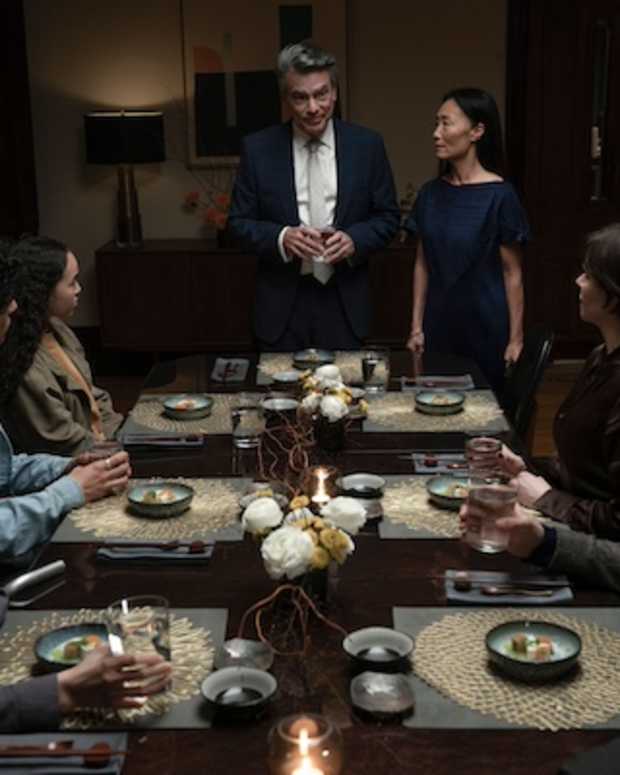
![[L-R] Jennifer Pyle, Carla Turner and Gina Dobson of BAB On 3!](https://scriptmag.com/.image/ar_8:10%2Cc_fill%2Ccs_srgb%2Cfl_progressive%2Cg_faces:center%2Cq_auto:good%2Cw_620/MjA1OTIwOTg0MjgzMjI3NjAy/bab-on-3-creators.jpg)
